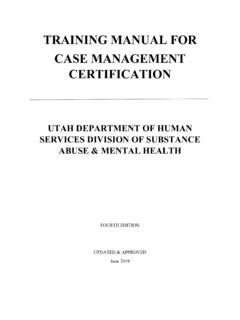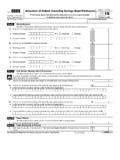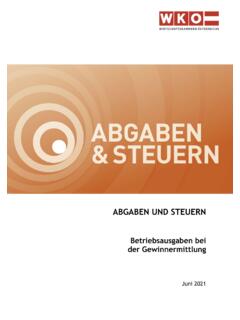Transcription of Lisa Najavits, PhD / Treatment Innovations PTSD …
1 1/1/18 1 lisa najavits , PhD / Treatment Innovations ptsd DSM-V definition: After a trauma (the experience, threat, or witnessing of physical harm, , rape, hurricane), the person has each of the following key symptoms for over a month, and they result in decreased ability to function ( , work, social life): intrusion ( , flashbacks, nightmares); avoidance (not wanting to talk about it or remember); negative thoughts and mood; and arousal ( , insomnia, anger). Simple ptsd results from a single event in adulthood (DSM-V symptoms); Complex ptsd is not a DSM term but may result from multiple traumas, typically in childhood (broad symptoms, including personality problems) Rates: 10% for women, 5% for men (lifetime, ).
2 Up to 1/3 of people exposed to trauma develop ptsd . Treatment : if untreated, ptsd can last for decades; if treated, people can recover. Evidence-based treatments include cognitive-behavioral-- coping skills training and exposure, , processing the trauma story. Substance Abuse The compulsion to use despite negative consequences ( , legal, physical, social, psychological). Note that neither amount of use nor physical dependence define substance abuse. DSM-V term is substance-related and addictive disorder , which can be mild, moderate, or severe. Rates: 35% for men; 18% for women (lifetime, ) It is treatable disorder and a no-fault disorder ( , not a moral weakness) Two ways to give it up: cold turkey (give up all substances forever; abstinence model) or warm turkey (harm reduction, in which any reduction in use is a positive step); moderation management, some people can use in a controlled fashion-- but only those not dependent on substances, and without co-occurring disorders).
3 The Link Between ptsd and Substance Abuse About ptsd and substance abuse Rates: Of clients in substance abuse Treatment , 12%-34% have current ptsd . For women, rates are 33%-59%. Gender: For women, typically a history of sexual or physical childhood trauma; for men, combat or crime Drug choice: No one drug of choice, but ptsd is associated with severe drugs (cocaine, opioids); in 2/3 of cases the ptsd occurs first, then substance abuse. Treatment issues Other life problems are common: other Axis I disorders, personality disorders, interpersonal and medical problems, inpatient admissions, low compliance with aftercare, homelessness, domestic violence.
4 ptsd does not go away with abstinence from substances; and, ptsd symptoms are widely reported to become worse with initial abstinence. Splits in Treatment systems (mental health versus substance abuse). Fragile Treatment alliances and multiple crises are common. Treatments helpful for either disorder alone may be problematic if someone has both disorders ( , emotionally intense exposure therapies, benzodiazepines), and should be evaluated carefully prior to use. Recommended Treatment strategies Treat both disorders at the same time. Research supports this and clients prefer this.
5 Decide how to treat ptsd in context of active substance abuse. Options: (1) Focus on present only (coping skills, psychoeducation, educate about symptoms) [safest approach, widely recommended]. (2) Focus on past only (tell the trauma story) [high risk; works for some clients] (3) Focus on both present and past Diversity Issues Respect cultural differences and tailor Treatment to be sensitive to historical prejudice. Recognize that terms such as trauma, ptsd , and addiction may be interpreted differently based on culture. Cultures also have protective factors (religion, kinship) that may prevent or heal trauma / addiction.
6 Seeking Safety About Seeking Safety A present-focused model to help clients (male and female) attain safety from ptsd and substance abuse. Up to 25 topics that can be conducted in any order, doing as many as time allows: Interpersonal topics: Honesty, Asking for Help, Setting Boundaries in Relationships, Getting Others to Support Your Recovery, Healthy Relationships, Community Resources Cognitive topics: ptsd : Taking Back Your Power, Compassion, When Substances Control You, Creating Meaning, Discovery, Integrating the Split Self, Recovery Thinking Behavioral topics.
7 Taking Good Care of Yourself, Commitment, Respecting Your Time, Coping with Triggers, Self-Nurturing, Red and Green Flags, Detaching from Emotional Pain (Grounding) 1/1/18 2 Other topics: Introduction/Case Management, Safety, Life Choices, Termination Designed for flexible use: can be conducted in group or individual format; for women, men, or mixed-gender; using all topics or fewer topics; in a variety of settings; and with a variety of providers (and peers). Key principles of Seeking Safety Safety as the goal for first-stage Treatment (later stages are mourning and reconnection) Integrated Treatment (treat both disorders at the same time) A focus on ideals to counteract the loss of ideals in both ptsd and substance abuse Four content areas: cognitive, behavioral, interpersonal, case management Attention to clinician processes: balance praise and accountability; notice your own emotional responses (fear, wish to control, joy in the work, disappointment); all-out effort.
8 Self-care Additional features Trauma details not part of group therapy; in individual therapy, assess client s safety and monitor carefully (particularly if has history of severe trauma, or if client is actively using substances) Identify meanings of substance use in context of ptsd (to remember, to forget, to numb, to feel, etc.) Optimistic: focus on strengths and future Help clients obtain more Treatment and attend to daily life problems (housing, AIDS, jobs) Harm reduction model or abstinence 12-step groups encouraged, not required Empower clients whenever possible Make the Treatment engaging: quotations, everyday language Emphasize core concepts ( , You can get better ) Evidence Base Seeking Safety is an evidence-based model, with over 45 published research articles and consistently positive results.
9 For all studies, go to , section Evidence. Studies include pilots, randomized controlled trials, multi-site trials. Resources on Seeking Safety. All below are available from and/or from the order form at the end of this packet of handouts. Implementation / research articles: all articles related to Seeking Safety can be freely downloaded. Training: training calendar and information on setting up a training (section Training). Consultation: on clinical implementation, research studies, evaluation projects. Fidelity Scale: free download (section Assessment). Book: Seeking Safety: A Treatment Manual for ptsd and Substance Abuse.
10 Has the clinician guide and all client handouts. Also available in Spanish, French, German, Swedish, Dutch, Polish, Chinese, Vietnamese, Portuguese, Italian, and Greek. Upcoming: Japanese and Arabic will also become available. DVD training series: four videos provide training on Seeking Safety. (1) Seeking Safety (two hour training video by lisa najavits ); (2) Asking for Help (one-hour demonstration of a group session with real clients); (3) A Client s Story (26 minute unscripted life story by a male trauma survivor) and Teaching Grounding (16 minute example of the grounding script from Seeking Safety with a male client); (4) Adherence Session (one hour session that can be rated with the Seeking Safety Adherence Scale).








